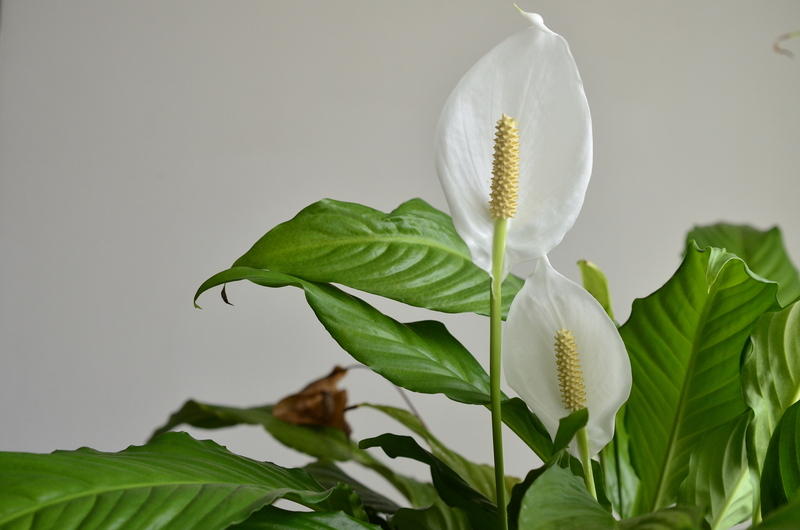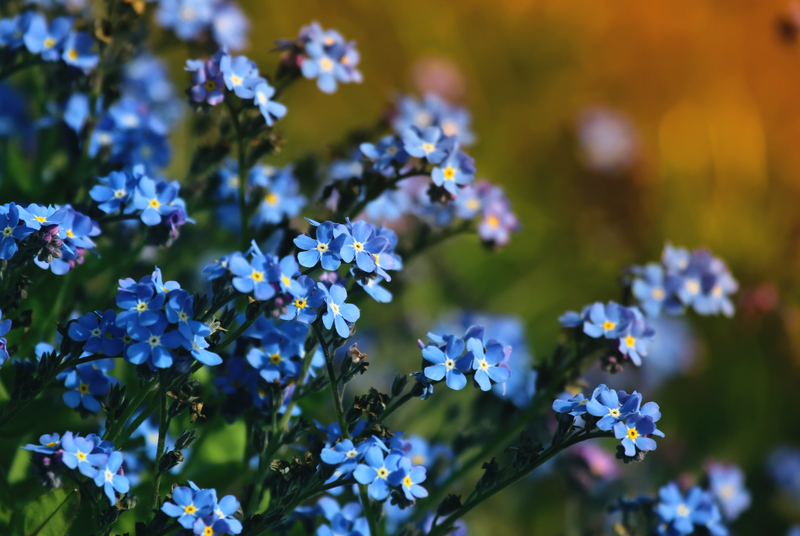Master the art of cultivating your own herb haven
Posted on 23/09/2025
Master the Art of Cultivating Your Own Herb Haven
Unlock the secrets to growing a lush, fragrant herb sanctuary right at your doorstep! In this comprehensive guide, we'll take you step by step through the process of mastering herb cultivation--whether you're working with a kitchen windowsill, balcony, or sprawling backyard. Dive in to discover expert tips, sustainable gardening hacks, and mouth-watering ways to put your bounty to use.

Why Create Your Own Herb Haven?
Imagine plucking fragrant basil, zesty mint, or delicate chives--fresh from your own garden! Cultivating your own herb oasis goes beyond flavor-packed meals:
- Healthier Meals: Fresh herbs add nutrition, antioxidants, and vibrancy.
- Sustainability: Reduce plastic packaging waste and carbon footprint.
- Cost Savings: A single plant can yield months of culinary joy.
- Therapeutic Value: The act of gardening soothes the mind and boosts well-being.
- Beauty: Herbs infuse patios, kitchens, or landscapes with texture and lush greenery.
Choosing the Right Space For Your Herb Sanctuary
Assessing Sunlight and Space
Herbs thrive with plenty of sunlight. Most culinary herb plants prefer 6-8 hours of direct sun daily. Observe your home or garden:
- Kitchen Windowsills: Perfect for a handful of compact pots.
- Balconies & Patios: Ideal for slightly larger containers or vertical gardens.
- Garden Beds: Unlimited potential for elaborate herb havens outdoors.
Soil, Drainage, & Containers
Good soil is critical for robust herb growth. Use quality potting mixes with ample drainage--herbs dislike soggy roots! For outdoor beds, enrich the soil with compost. Consider:
- Clay Pots: Breathability for roots; classic style for windowsills.
- Self-watering Containers: Consistent moisture for busy growers.
- Raised Garden Beds: Control over soil quality and structure.
Selecting Herbs for Your Home Herbal Garden
Every herb haven is unique. Start by choosing herbs that match your taste, cooking style, and available space.
Beginner-Friendly Herbs
- Basil: A sun-lover perfect for pasta, salads, and infusing oils.
- Parsley: Hardy, easily regrows after cutting, and versatile.
- Mint: Prolific and resilient--great for teas, desserts, and cocktails.
- Chives: Delicate onion-flAVOR; perfect for eggs and soups.
- Thyme: Aromatic and drought-tolerant--excellent with roasted dishes.
- Oregano: Pizza and Mediterranean cuisine essential.
- Cilantro / Coriander: Essential for salsa lovers and curries.
Unusual and Specialty Herbs
_Once you feel confident, branch out into unusual flavors:_
- Lemongrass: For fragrant teas and Southeast Asian recipes.
- Sorrel: Tangy, bright addition to salads or sauces.
- Culinary Lavender: Add to desserts, lemonade, or herb blends.
Planning and Planting Your Herb Oasis
Strategic Herb Placement
Strong "companion planting" can improve growth, pest control, and flavor. Consider:
- Basil improves the growth of tomatoes--grow together!
- Mint is invasive--plant alone in a deep container.
- Shade-lovers like parsley and chives can grow beneath taller plants.
- Perennials (thyme, rosemary, oregano) can be clustered for year-round structure.
How to Plant Herbs: Seeds vs. Seedlings
Seeds: Economical and offer variety, but take patience. Start seeds indoors 6-8 weeks before the last frost.
Seedlings: Instant gratification! Many garden stores offer healthy young plants ready for potting or planting.
Planting Best Practices
- Loosen Roots: Gently tease root balls before planting seedlings.
- Spacing: Avoid overcrowding--herbs need air to prevent mildew and promote lush foliage.
- Labeling: Use weatherproof tags or creative DIY labels to keep track of each herb.
Caring for Your Thriving Herb Paradise
Watering Wisely
_Overwatering is the top culprit for failing herb gardens._ Most herbs prefer to dry out slightly between waterings.
- Check soil moisture by inserting your finger--water only if the top inch is dry.
- Morning watering prevents evaporation and reduces disease risk.
- Clay pots dry faster; plastic pots or self-watering containers retain more moisture.
Feeding and Pruning for Lush Foliage
- Fertilizing: Use natural, organic fertilizers like compost tea or worm castings. Fertilize lightly every 2-3 weeks in the growing season.
- Pruning: Regular harvesting encourages bushier growth. Snip just above a leaf node with clean scissors to promote new shoots.
- Pinch Flowers: Remove flower buds from herbs like basil and cilantro to prevent them from going to seed and losing flavor.
Pest & Disease Management
- Encourage beneficial insects like ladybugs and lacewings by planting companion flowers.
- Use organic methods for pest control: neem oil, insecticidal soap, or hand-picking.
- Check leaves regularly for spots, holes, or discoloration and isolate affected plants if needed.
Creative Herb Haven Inspirations
Vertical Herb Gardens
Don't let limited space stop you! Wall-mounted planters, stacked pots, or hanging baskets create vertical layers of color, fragrance, and taste.
Windowsill Herb Jars
Repurpose glass jars for a rustic and space-saving indoor herb display. Ensure adequate drainage by adding gravel or charcoal beneath the soil.
Herb Spiral Beds
Construct a raised spiral of rocks, bricks, or wood--this design maximizes microclimates, letting you plant sun-loving and shade-tolerant herbs together.
Companion Flower Planting
Mix flowering herbs (lavender, nasturtium, borage) with culinary herbs for a pollinator-friendly, visually stunning herb oasis.
Harvesting and Preserving Your Abundant Herbs
When and How to Harvest
- Regularly pinch tips to encourage bushy growth and prevent woody stems.
- Best Time: Early morning after dew dries, before the sun is too hot.
- Use clean, sharp scissors or garden snips.
Preserving Your Herb Bounty
Never waste a leaf! When herbs are abundant:
- Drying: Air-dry bundles upside down, or use a food dehydrator for more delicate leaves.
- Freezing: Chop herbs and pack into ice cube trays with olive oil or water for winter cooking.
- Infusing: Create your own herb butters, vinegars, or flavored oils.
Herb Haven Recipes to Try
Flavorful Ways To Use Your Fresh Herbs
- Pesto: Blend basil, parsley, or cilantro with garlic, nuts, olive oil, and cheese.
- Herbal Teas: Steep mint, lemon balm, or chamomile for a relaxing, caffeine-free infusion.
- Salad Dressings: Whisk up vinaigrettes with chives, oregano, or tarragon.
- Herbed Butters: Mix chopped thyme and rosemary into softened butter for a savory spread.

Frequently Asked Questions About Cultivating a Home Herb Garden
Do I need expensive gardening tools?
_No--most herb gardening requires only basic tools: a small trowel, hand pruner, and watering can. A good pair of gloves is a bonus!_
Can I grow herbs year-round?
_Absolutely! Indoor herb gardens on sunny windowsills or under grow lights can thrive all year long. Choose perennial varieties for continual harvests._
What herbs grow well together?
Group Mediterranean herbs (rosemary, sage, thyme, oregano) together--they love similar sun and well-drained soil. Keep thirsty, tender herbs like basil and parsley separate for optimal growth.
How do I avoid pests without resorting to chemicals?
_Plant companion flowers, use neem oil or insecticidal soap, and inspect plants daily for early signs. Healthy, unstressed herbs are naturally more pest-resistant._
Conclusion: Savor the Joy of Your Own Herb Haven
From the simple delight of sprinkling freshly cut basil on pizza to the satisfaction of nurturing a windowsill garden, cultivating your own herb sanctuary is one of nature's greatest gifts. With this step-by-step guide, you'll master the art of growing herbs, enjoy fresher flavors, elevate your cooking, and create a green escape that refreshes body and mind.
So whether you dream of a kitchen bursting with fresh parsley and mint or an outdoor herb oasis to share with pollinators, start today. Your very own thriving herb haven is just a few seeds away!

